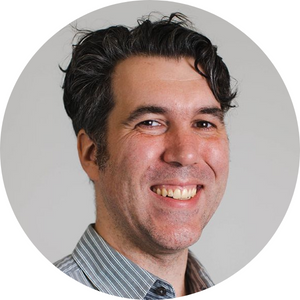What is a financial plan?
When some people hear “making a financial plan,” their eyes glaze over because they think it’s something needed only for retirement planning. While retirement planning is an important component of your financial plan, it’s so much more than that.
A financial plan is a written report that details your financial objectives and priorities, as well as charts out a path to achieve them. The process involves examining how much money you have right now, how much you’ll need in the future, and what you need to do to reach your short- and long-term objectives. For instance, it can help determine whether to contribute to a TFSA or RRSP (or both) and how much you’ll need to save in order to retire. Making a financial plan can help you chart your path.
How to create your own financial plan in 7 steps
A lot of people assume that it’s necessary to hire a financial advisor in order to create a financial plan. Not true! You can easily do it yourself, and we’ll show you how to make your own financial plan in seven easy steps.
1. Set your goals and priorities
What would you like your future to hold? Your DIY financial plan starts with some tough questions about what kind of life you’d like to live. Do you want to start your own business in the next few years? Do you plan on taking a “gap year” to travel? Or is your biggest goal to retire early?
Start by organizing your financial objectives into short- and long-term goals. What do you want to achieve within the next five years? Ten years? Twenty-five years? A short-term goal might be to save up for a wedding in the next 1-3 years. A longer-term goal might be to save up for a down payment to buy a house. Either way, you need a plan in place to make it happen.
Once you’ve prioritized your goals, start thinking about what you need to do to accomplish them. This is where you might have to make some hard choices. For instance, if you want to retire early, it might mean downsizing to a smaller apartment or selling your car so you can invest a bigger chunk of your paycheque. It’s all about balancing your priorities with your financial realities.
If retirement is at the top of your list, open an RRSP account with Wealthsimple, one of the best robo-advisors in Canada, and set up automated deposits. There’s no minimum investment amount and they offer sophisticated, personalized portfolio management at a competitive price.
2. Determine your net worth
The next step is to get a picture of your current financial situation by creating a net worth statement. This is a great exercise to see how you’re doing financially. The math to figure out your net worth is straightforward:
-
Assets: Make a list of everything you own that has value and include an estimated dollar amount. This may include your home, vehicles, cash in bank or investing accounts, art and collectibles, etc. Add everything up to get a total assets figure.
-
Liabilities: Make a list of all debts or liabilities you might have. Make sure you include items like how much you owe on your mortgage or line of credit, outstanding credit card balances, taxes and loans. Tally up those amounts.
Finally, subtract liabilities from your assets to get your net worth. That figure provides a quick snapshot of your overall financial health.
3. Track your cash flow
Your next task is to scrutinize your cash flow (how much you spend versus how much you earn). That means tracking all your spending, from your cell phone fees to your morning coffee. Downloading a personal finance app like You Need a Budget (YNAB) can help you monitor your cash flow. If your spending is higher than your income, you may have to revise your goals and timeline for achieving them. That’s okay – you’ll get there! This is also a perfect chance to cut back on non-essential spending or get one of the best cash back credit cards to put a little more money into your pocket.
4. Match your goals to spending
If your earnings are higher than your spending, then congratulations! You’re in a good position to invest and save money for what you want out of life. Looking at your expenses, determine how much can you put aside each month to invest or stash in a high-interest savings account. The path to long-term financial security starts with “paying yourself first” and automating your savings – which means setting up regular contributions to your savings and investment accounts instead of waiting to see what’s leftover from your paycheque. Treat it as a priority — just like you would for paying rent or your hydro bills. Do the math to find out how long it will take you to meet your top financial goals: divide the total cost of the item by a weekly or monthly amount to determine how long it will take for you to have the funds. For example, to max out your TFSA this year, you’ll need to put aside roughly $115/week or $500/month to reach $6,000 in 12 months.
However, if you’re spending more than you earn, it’s going to make achieving your financial goals difficult. If you’re in debt, try to pay off as much as you can and tackle the bills with the higher interest rates first. If you’re struggling to keep up with payments, consider switching to one of the best low-interest credit cards or signing up for one of the best balance transfer credit cards (some of which offer 0% interest for a limited time). It’ll save you a ton of interest and put more money back into your wallet.
5. Create an investing plan
Once you know how much you can afford to invest, it’s easy to get going. Today, many Canadians are breaking up with their financial advisors and investing with one of the best robo-advisors in Canada instead. They offer simplified online investment management based on computer algorithms, which help to keep fees lower. A robo-advisor like Wealthsimple (our top pick) will use a questionnaire to match your financial goals and risk tolerance to a portfolio to best suit your needs. Plus, their fees are much lower than mutual funds – meaning you’ll get an even better return on investment.
Here’s a pro-tip: several robo-advisors in Canada, including Wealthsimple, allow you to schedule automatic deposits into your investment account. Then you just relax and watch your money pot grow. With its competitive fees and easy-to-use platform, Wealthsimple is our top choice and you can read about all the reasons why we love it in our Wealthsimple review.
Perhaps you’re already a savvy investor and you know what you need to do to reach your financial goals. You just need an easy way to invest without racking up a ton of fees, which you can do with an online brokerage. Check out our ultimate guide to Canada’s best trading platforms to find one that best suits your needs.
6. Review your insurance coverage
Insurance is first and foremost about protecting yourself and your family. It’s one of those things that you’ll be grateful for when you need it. Essential types of insurance include auto (legally required to drive in Canada), home (or contents, if you’re renting) and perhaps health and disability, especially if your employer does not offer coverage. Experts are divided over life insurance. If you have a family or you’re the sole income earner in your household, it makes sense to make sure that the people you care about will not suffer financial hardship without you. Talk to an insurance expert to help assess your needs. Read more about insurance and why you need it.
7. Make a will
You may not think you need one, but as soon as you’ve got assets, get a legal will ASAP. It’s a legal document that names your beneficiaries and what you want them to have. Once you make a will, make sure you keep it updated as your circumstances change (e.g. you get married/divorced, have kids, buy a vacation home). It doesn’t have to be complicated either: with Willful, you can complete a legal will online in 20 minutes for as little as $99. No lawyer or notary public needed.
When do you need a financial advisor?
Armed with the right info, most Canadians can do their own financial planning without a financial advisor. However, some people still prefer to hire a financial advisor. Perhaps they have more complex financial circumstances or don’t feel confident about handling money matters.
If you do decide to go this route, it will cost you. The trouble with many financial investment services is that there are fees and commissions charged to buy and sell investments which can take a big bite out of your stash of cash. Those factors can make it especially difficult for smaller investors with more modest funds to get professional advice and invest optimally.
But here’s the good news: some of Canada’s top robo-advisors, such as Wealthsimple, offer limited financial planning to their customers. For instance, if you’re a Wealthsimple Black client, you have access to goal-based financial planning with an experienced portfolio manager. Likewise, Wealthsimple Generation clients get the added benefit of in-depth financial planning and a team of experts that will design a personalized financial report customized to your goals. All Wealthsimple customers, regardless of their tier, have unlimited access to real humans providing expert financial advice.
Budget vs. financial plan: What’s the difference?
While budgets and financial plans work together, a budget alone won’t cut it for achieving your longer-term aspirations, like buying a house or saving for an RESP or RRSP. A budget tracks your income and expenses, whereas a financial plan assesses your total financial health and maps out what you need to do to get “financially fit.” You need both a budget and a financial plan!
Bottom line
Once you know how to do your own financial planning, you’re well on your way to ticking off your bucket list: from buying a cottage by the lake to building up an ample nest egg to fund your golden years — whatever your heart desires! It’s easier than you think, but to get there, you need to take the necessary steps right now.
Start by determining your financial goals and priorities and then crunching the numbers to carve out a concrete (and realistic) financial plan. Once that’s in place, open an investing account with a robo-advisor or online brokerage and set up automated payments.






